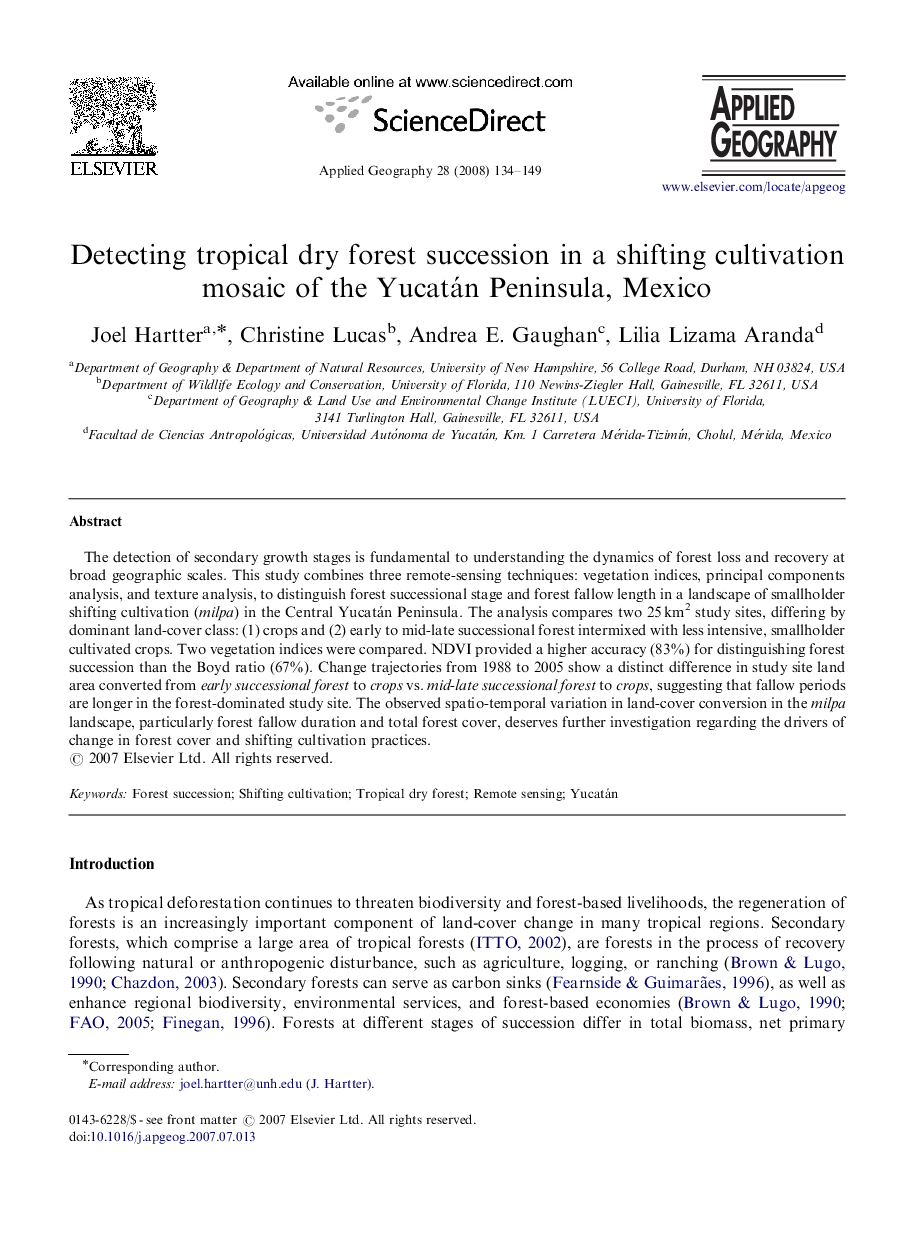| Article ID | Journal | Published Year | Pages | File Type |
|---|---|---|---|---|
| 83836 | Applied Geography | 2008 | 16 Pages |
The detection of secondary growth stages is fundamental to understanding the dynamics of forest loss and recovery at broad geographic scales. This study combines three remote-sensing techniques: vegetation indices, principal components analysis, and texture analysis, to distinguish forest successional stage and forest fallow length in a landscape of smallholder shifting cultivation (milpa) in the Central Yucatán Peninsula. The analysis compares two 25 km2 study sites, differing by dominant land-cover class: (1) crops and (2) early to mid-late successional forest intermixed with less intensive, smallholder cultivated crops. Two vegetation indices were compared. NDVI provided a higher accuracy (83%) for distinguishing forest succession than the Boyd ratio (67%). Change trajectories from 1988 to 2005 show a distinct difference in study site land area converted from early successional forest to crops vs. mid-late successional forest to crops, suggesting that fallow periods are longer in the forest-dominated study site. The observed spatio-temporal variation in land-cover conversion in the milpa landscape, particularly forest fallow duration and total forest cover, deserves further investigation regarding the drivers of change in forest cover and shifting cultivation practices.
